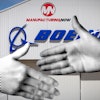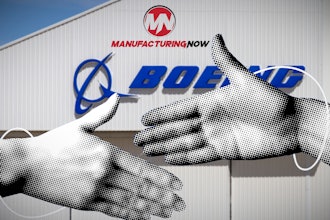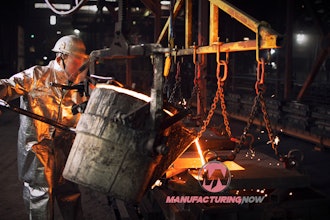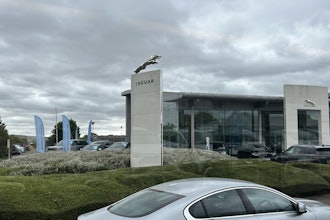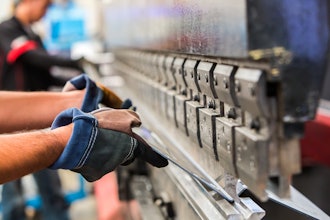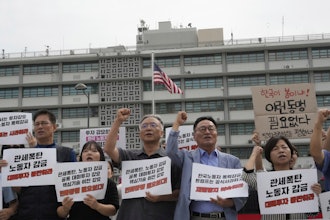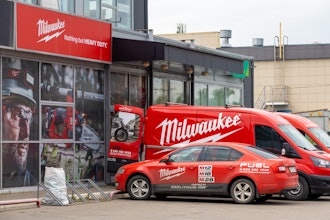 |
| Pictured is the integrated Bayer site in the Shanghai Chemical Industry Park. In the foreground is the state-of-the-art methylene diphenyl diisocyanate plant. |
While the efficacy of this jobs act will not be realized in the short term, its generous incentives will have an immediate impact as tax season approaches and businesses consider end-of-year equipment purchases.
Section 179
The first of two repackaged tax incentive programs now available to processors is Section 179. Also known as small business expensing, Section 179 is a permanent part of the tax code that allows businesses to write off 100 percent of qualified equipment and software.
In 2008, stimulus measures increased the limit for deductions from $125,000 to $250,000. The Small Business Jobs Act of 2010 further increased the limit to $500,000.
That is not to say that companies spending more than $500,000 on equipment do not qualify. In fact, companies spending up to $2 million can still deduct $500,000 worth of purchases. However, a dollar-for-dollar reduction in the expensing limit goes into effect for every dollar spent over $2 million, meaning that companies spending more than $2.5 million on equipment do not qualify for any deductions under Section 179.
The new provisions in Section 179 are valid for the 2010 and 2011 tax years, and must be elected by filling out Part 1 of the Internal Revenue Service (IRS) form 4562.
Bonus Depreciation
The economic downturn experienced in the U.S. after the September 11, 2001 terrorist attacks prompted lawmakers to introduce a 30 percent depreciation bonus to allow businesses to more quickly recover the costs of certain capital expenditures. The program was subsequently extended to allow a 50 percent depreciation deduction as part of the 2008 stimulus bill. After expiring at the end of 2009, the depreciation bonus was reinstated as part of the Small Business Jobs Act of 2010.
It works by rewarding capital expenditure and investment by trimming tax bills in the current term. Christian Klein, vice president of Government Affairs and Washington Counsel for Associated Equipment Distributors, is a strong advocate for the bonus depreciation, but he doesn’t disguise its drawbacks.
“The problem with the depreciation bonus is that it’s an incentive to buy new equipment—it’s not a reason in and of itself. No one is going to run out and buy new equipment if they don’t need it, just to be able to write off 50 percent in the first year. It works if you need equipment and if you’re profitable.
“You can write off 50 percent in the first year, but it means that you have less to write off later; [in other words,] your tax bill may wind up being a little bit higher in future years because you’ve written off everything in the first year.” Klein continues, “It’s not a panacea, but it is a very good incentive. So if you’re having a good year and you need equipment—or you think you may need equipment next year—it’s a really good reason to buy this year.”
The two most important things to remember are:
- Equipment must be put into service—not simply purchased—in order to qualify for the depreciation bonus.
- The bonus depreciation expires at the end of 2010—it does not carry over to 2011 like Section 179.
New, Used, Leased & Already Purchased
Used equipment can be written off under Section 179, but not under bonus depreciation. For bonus depreciation to apply, the first use of the equipment has to occur with the taxpayer claiming the benefit.
Section 179 also includes equipment purchases made prior to the bill being signed into law.
“The rationale for making it retroactive is to reward companies that have bet on the future of the U.S. economy and not sat on their hands,” explains Klein.
“What they’re trying to do with these temporary tax incentives is to shift future behavior into the present. It’s a great way to incentivize a lot of purchasing activity in the last quarter of the year.”
A provision for leased equipment also exists under Section 179 that permits companies to deduct the full value of the equipment. This can result in tax savings that exceed the lease payment.
How It Adds Up
Any company with equipment purchases less than $500,000 will use only Section 179 to write off 100 percent of the costs, while companies spending more than $2.5 million will qualify exclusively for the 50 percent depreciation bonus. Any company spending between $500,000 and $2.5 million will be able to use both Section 179 and the depreciation bonus.

Facilities with equipment expenditures between $500,000 and $2.5 million can combine the tax incentives contained in Section 179 and the depreciation bonus. Note that the 50 percent bonus depreciation write-off is scheduled to expire at the end of 2010.
For example, qualified equipment purchases totaling $600,000 can result in:
- A $500,000 write-off under Section 179.
- A $50,000 write-off for bonus depreciation.
- A standard first-year depreciation deduction of $60,000. (This value will vary depending on the depreciation schedule.)
- Total first-year deductions of $610,000.
- A return of $213,500, assuming a 35 percent tax rate.
All companies have individual tax requirements and should consult a qualified tax accountant to verify the benefits of any tax incentives.
Before You Buy ...
Capital equipment is, by definition, a significant investment for processing plants. While it may seem obvious, processors should ensure that they anticipate future capacity, and fully understand the system and installation requirements prior to making a purchase.
Sentry Equipment Corp.’s president and CEO, Mike D. Farrell, also suggests that purchases should not be based on up-front costs alone.
“One of the biggest mistakes a facility or business can make is in failing to recognize or leverage new technology as an essential business tool. Making a decision based solely on the up-front cost—without considering gains in productivity, cycle time, volume or overhead savings—or deciding to play it safe by not investing at all only puts you behind and makes it more difficult to adapt to a changing business environment. When new technology is applied with foresight and common sense, one can strategically improve business.”
For companies with facilities outside the U.S., an additional layer of complexity is added. John Morrison, manager of business development at Hamilton Sunstrand, says you have to properly understand the technical support available in foreign markets.
“A large problem within the growing process markets in developing countries is not understanding the local plant operator’s ability to operate and maintain advanced technical equipment. Even when the purchasing decisions are left to qualified engineering, procurement and construction contractors and integrators, the results are often the same—abandoned analyzers and instrumentation that could be driving down costs and improving efficiency.”
Resources
- The Associated Equipment Distributors runs a website dedicated to the depreciation bonus: www.depreciationbonus.org.
- A useful collection of information pertaining to Section 179 can be found at www.section179.org.
- For more information on the Small Business Jobs Act of 2010, including a full text version of the legislation, go to the Library of Congress website, thomas.loc.gov, and search for bill number HR 5297.
- Detailed explanations of depreciation and tax codes can be found on the IRS website at www.irs.gov.
- Processing equipment listings, information, photos and some specifications can be found on the Chem.Info website at
www.chem.info/products.
The information contained within this article is designed to provide an overview of the new tax incentives and should not be considered tax advice. Readers should consult a qualified tax accountant prior to making any purchasing decisions.

